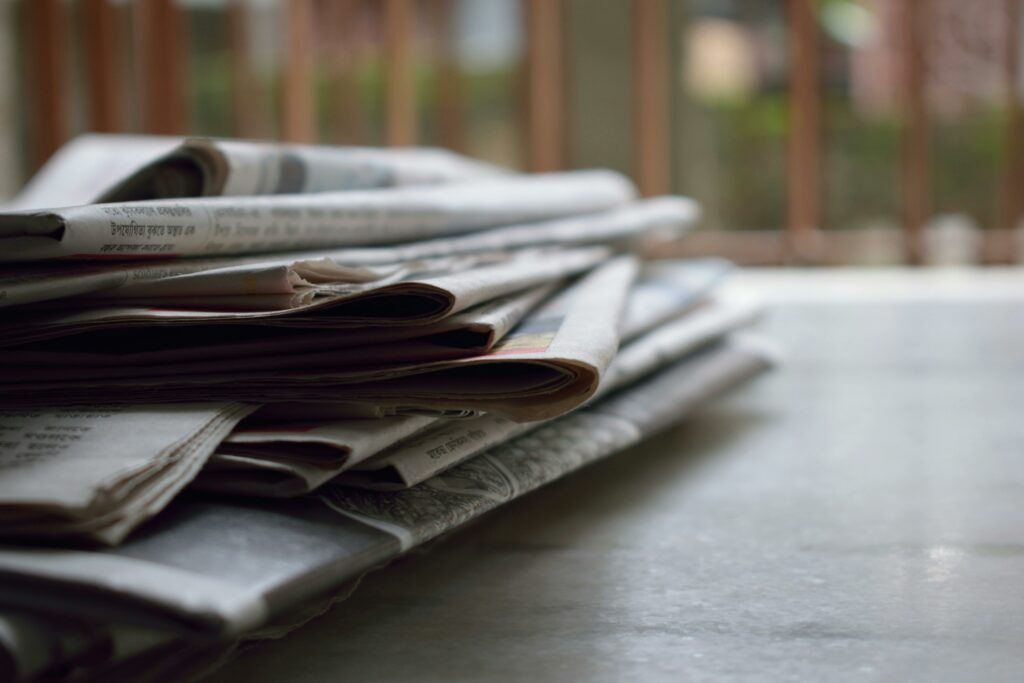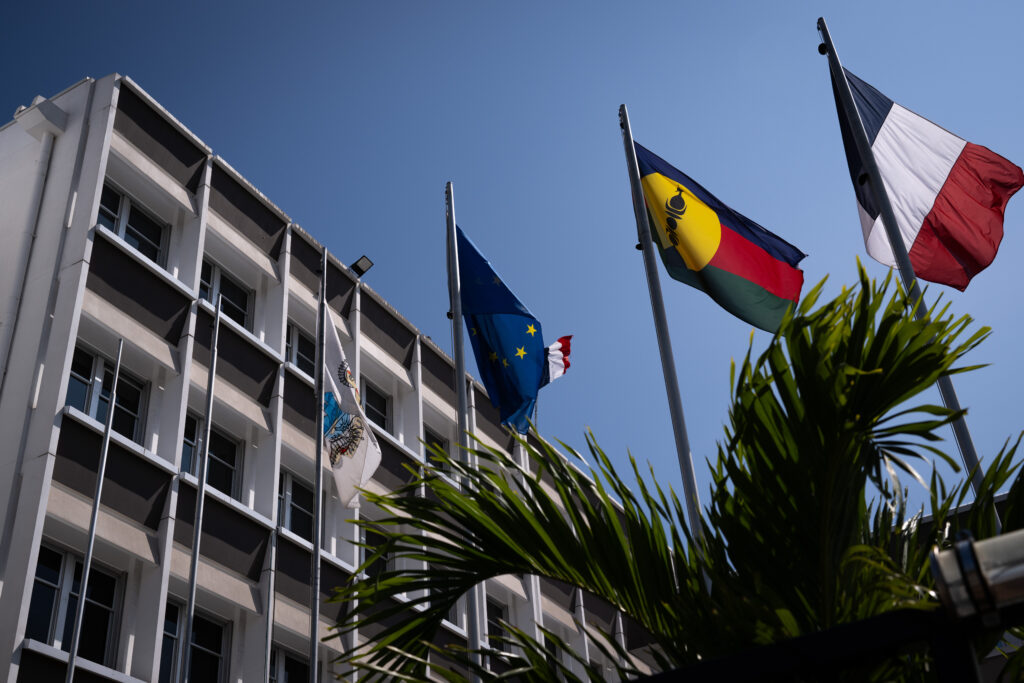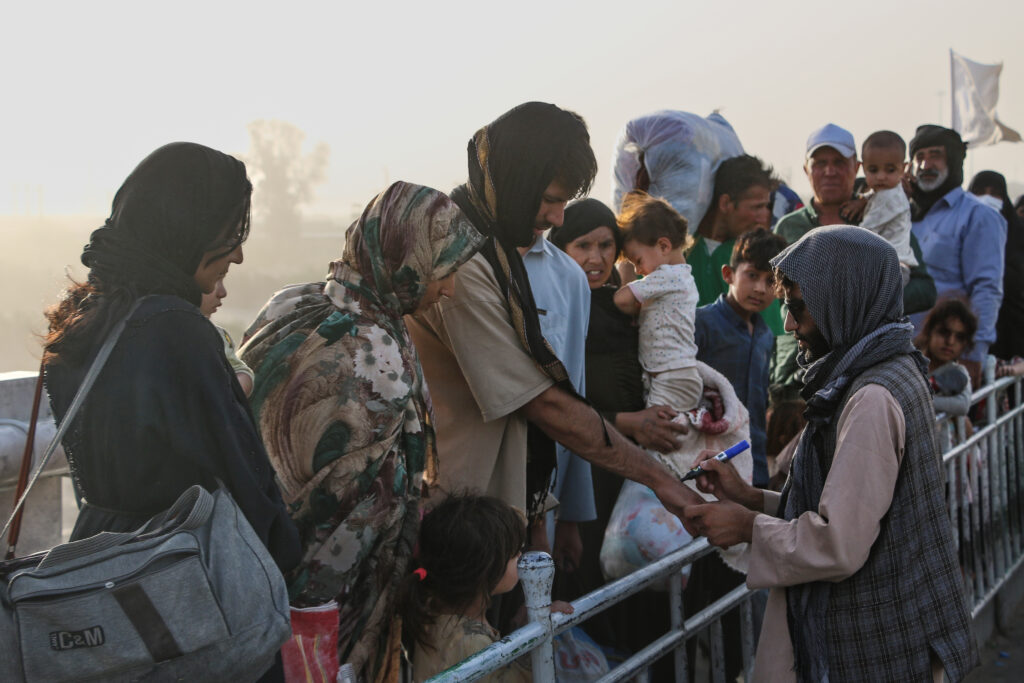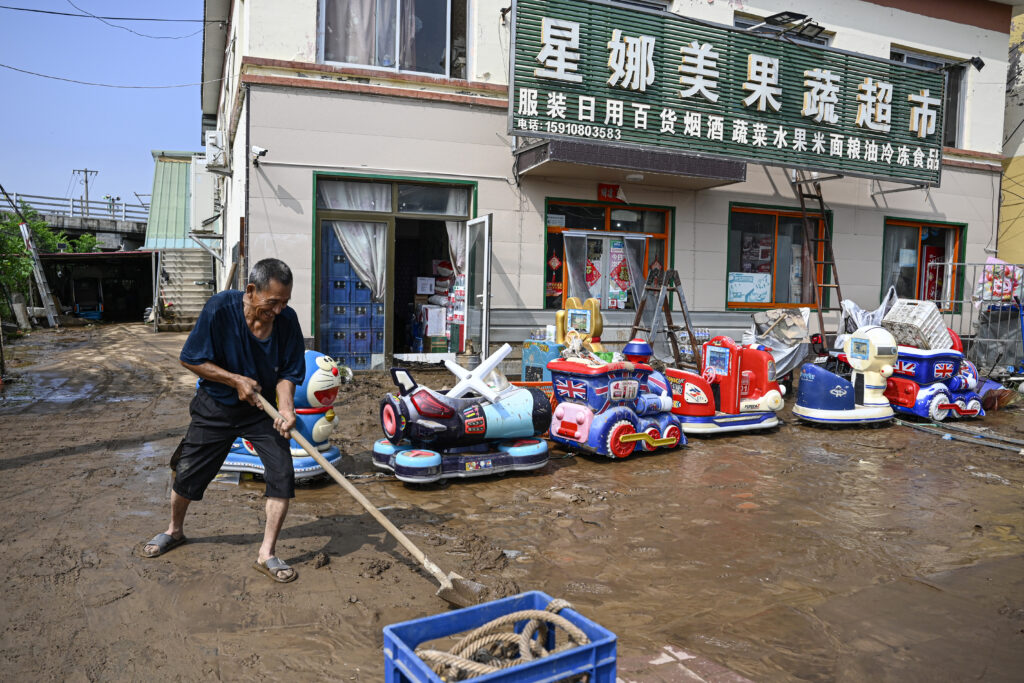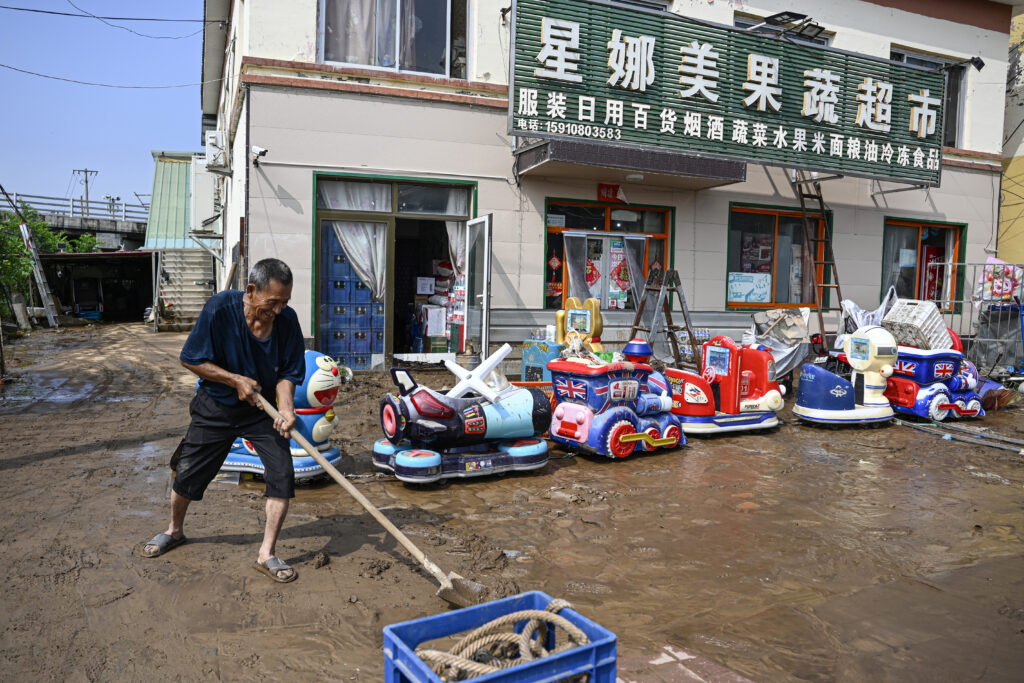Nouvelle-Calédonie: la population baisse pour la première fois depuis 1946
La population de la Nouvelle-Calédonie a connu ces dernières années un recul historique et s’élève désormais à 264.596 habitants, selon les résultats du recensement 2025 présentés mardi par l’Institut de la statistique et des études économiques (Isee).L’archipel français du Pacifique Sud a perdu 6.811 habitants par rapport aux 271.407 recensés en 2019, ce qui constitue une première baisse démographique depuis le début du siècle.”C’est la première fois depuis 1946 que la population calédonienne baisse entre deux recensements ”, a souligné lors d’une conférence de presse Jean-Philippe Grouthier, chef de mission recensement à l’Insee, venu en appui de l’Isee.Le solde naturel (différence entre le nombre de naissances et de décès) reste positif sur la période, à environ +11.000, mais il est en recul, tandis que le solde migratoire s’effondre, à -18.000. “Ce que l’on observe entre 2019 et 2025 est la combinaison de nombreux facteurs: vieillissement, recul de la natalité, crise du Covid, événements de mai 2024. On ne peut pas aujourd’hui isoler précisément l’impact de chacun ”, a expliqué M. Grouthier.Selon l’Isee, la tendance migratoire à la baisse s’était amorcée avant les violences insurrectionnelles de mai 2024, qui ont plongé le territoire dans une crise profonde.”L’excédent migratoire des 25-40 ans a quasiment disparu entre 2014 et 2019. Déjà à l’époque, la Nouvelle-Calédonie avait perdu de son attractivité”, a fait valoir le chef de mission.Les baisses démographiques les plus importantes concernent Nouméa et son agglomération, d’après les chiffres présentés mardi.Mais “il n’y a pas, statistiquement, de retours massifs en tribu”, a affirmé M. Grouthier, alors que certains responsables politiques ou coutumiers avancent l’hypothèse d’un exode des Kanak vers les tribus après 2024. Les résultats du recensement seront juridiquement validés par décret en septembre et pris en compte à partir du 1er janvier 2026 pour les dotations aux communes et les élections municipales de mars.La Nouvelle-Calédonie fait l’objet d’un recensement exhaustif et non d’un sondage par échantillon, comme en métropole. Cette campagne, à la charge de l’Etat, a coûté entre 3 et 4 millions d’euros. Un dénombrement général est également envisagé à Mayotte dans les mois à venir à la suite du passage du cyclone Chido en décembre 2024.
Afghans show solidarity as migrant returns from Iran surge
At the border with Iran, Fatima Rezaei distributes food and hygiene products to Afghans forced to return, unable to passively stand by as the deportation crisis grows.The 22-year-old is one of many Afghan volunteers rallying to help their compatriots, despite having little themselves.Since the beginning of the year, more than 1.6 million Afghans, including many children, have returned after being deported or driven out of Iran, which accuses them of pushing up unemployment and crime.”It doesn’t matter whether you have a lot of money or not. I don’t have much, but with the help of Afghans here and abroad, we manage,” said Rezaei. The number of crossings at the Islam Qala border has reached 30,000 on several days, peaking at 50,000 on July 4, according to the United Nations High Commissioner for Refugees (UNHCR).In response, residents of the western region have mobilised, partly thanks to donations sent by Afghans living in Europe or North America.A journalist for a local television channel, Rezaei travels over 100 kilometres (62 miles) to reach the border from her hometown of Herat.From a stack of cardboard boxes, she distributes baby wipes and sanitary towels to women gathered under a tent and surrounded by around a dozen children.”It is our responsibility to stand by their side,” she said. “The government tries to help, but it’s not enough.”International organisations are helping to register migrants but face massive budget cuts.Meanwhile, Taliban authorities struggle to support the influx of Afghans who have often left everything behind and returned to a country mired in poverty.- ‘We have a duty’ -Unemployed Hosna Salehi volunteers with her parents’ charitable organisation, Khan-e-Meher, to distribute aid, such as infant formula. “Some women with young children tried to breastfeed but didn’t have enough milk due to stress,” she told AFP. “Our fellow Afghans need our support right now. We have a duty to give what we can, no matter if it is a little or a lot.”The show of solidarity “makes us proud”, said Ahmadullah Wassiq, director of Afghanistan’s High Commission for Refugees. “The government cannot solve these problems alone,” he acknowledged, “and the efforts of citizens must be applauded”. The Taliban government says it provides money upon arrival and is establishing towns dedicated to returning Afghans, though it does not specify when they will be ready. In Herat, the nearest major city to the border, some in the most precarious circumstances have been living in parks in tents donated by residents.- ‘Extended a hand’ -Some said they were having to rebuild their lives after returning home.”The only thing we’re worried about is finding work,” said Hussein, 33, who spent more than 10 years in Iran.”There, they told us our papers were no longer valid. We had good jobs, now we need to find work and start from scratch,” said the father-of-two, who was moved by the support he encountered on the Afghan side of the border.”They really helped us and extended a hand,” he said as he waited for a free bus to take him the nearly 1,000 kilometres to the capital Kabul.In Afghanistan, where half the population of around 48 million lives below the poverty line according to the World Bank, “there isn’t much of a culture of volunteering”, said 27-year-old Omid Haqjoo, as he prepared food in vast cooking pots.”But we are trying to promote it… to provide the support that is missing,” he added.After a day of heat in the humanitarian tents at Islam Qala, Salehi felt strengthened by a “life lesson”.”If I was able to help volunteer, I think everyone can,” she said.”And when I go home and think of all the fellow Afghans who smiled at me and prayed for me, that’s enough for me.”
Déluge et inondations en Chine, 30 morts et 80.000 évacuations à Pékin
Les pluies diluviennes qui frappent cette semaine le nord de la Chine ont fait 30 morts et entraîné plus de 80.000 évacuations à Pékin, ont annoncé mardi les médias d’Etat.L’agence météorologique chinoise a émis mardi son deuxième plus haut niveau d’alerte aux précipitations pour la capitale chinoise, sur une échelle en comptant quatre, a rapporté l’agence de presse officielle Chine nouvelle.Sont également concernées les régions limitrophes de Hebei et Tianjin, ainsi que dix provinces du nord, de l’est et du sud de la Chine. Des pluies violentes y sont attendues jusqu’à mercredi, selon la même source.A Pékin, “la dernière série de violents orages a fait 30 morts (…) jusqu’à lundi minuit”, a écrit Chine nouvelle, citant le centre municipal de lutte contre les inondations.”Un total de 80.332 personnes ont été déplacées” à cause des intempéries, a pour sa part indiqué sur la plateforme WeChat le journal local Beijing Daily, un média officiel.Le district de Miyun, dans le nord-est de Pékin, a enregistré le plus de dégâts.”La pluie a été exceptionnellement intense cette fois, ce n’est pas comme ça normalement”, raconte à l’AFP une habitante du district nommée Jiang.”La route est remplie d’eau, donc les gens ne peuvent pas aller travailler”, explique-t-elle, montrant la route devant sa maison submergée par un torrent d’eau.Des journalistes de l’AFP sur place ont vu un engin de chantier mettre des personnes et un chien en sécurité, et des sauveteurs patauger dans l’eau jusqu’aux genoux.A proximité, dans la ville de Mujiayu, les journalistes de l’AFP ont vu un réservoir libérer un torrent d’eau, et des ambulances et véhicules militaires sillonner les rues inondées. Des lignes électriques ont été emportées par les torrents boueux.Les pompiers ont également secouru 48 personnes piégées dans un centre de soins pour personnes âgées, a rapporté la chaîne publique CCTV.Les districts de Huairou, dans le nord, et Fangshan, dans le sud-ouest, ont également été particulièrement touchés, selon les médias d’Etat.- “Graves catastrophes” -Le quotidien Beijing Daily a par ailleurs fait état de dizaines de routes fermées et de plus de 130 villages des environs privés d’électricité.”S’il vous plaît, soyez attentifs aux prévisions et alertes météorologiques et ne vous rendez pas dans des zones à risques sauf en cas de nécessité”, a lancé la publication.Le président chinois Xi Jinping a exhorté les autorités lundi soir à accélérer la mise à l’abri des habitants des zones risquant d’être inondées.Le gouvernement a débloqué 350 millions de yuans (42 millions d’euros) à destination des opérations de secours dans neuf régions touchées par les intenses précipitations, a annoncé mardi CCTV. Une enveloppe séparée de 200 millions de yuans (24 millions d’euros) a elle été réservée uniquement pour Pékin, selon la télévision publique.Dans la province du Hebei, qui entoure la capitale, un glissement de terrain dans un village avait tué quatre personnes et fait huit disparus lundi, selon CCTV. Les autorités locales ont émis une alerte aux crues subites, en vigueur jusqu’à mardi soir. Chengde – la capitale régionale – et ses environs sont visés par le plus haut niveau d’alerte.Les catastrophes naturelles sont courantes en Chine, surtout durant l’été, quand certaines régions sont submergées par des pluies diluviennes pendant que d’autres sont en proie à d’intenses canicules.La Chine est le plus gros émetteur mondial de gaz à effet de serre qui, selon les scientifiques, accélèrent le changement climatique et rendent plus fréquents et intenses les événements météorologiques extrêmes.Le géant asiatique est aussi un acteur majeur du secteur des énergies renouvelables, et vise à atteindre la neutralité carbone d’ici 2060.Plus tôt en juillet, des crues subites dans la province du Shandong (nord-est) ont fait deux morts et dix disparus. Par ailleurs, dans la province du Sichuan (sud-ouest), un glissement de terrain sur une autoroute a causé la mort de cinq personnes.En 2023, de violentes précipitations avaient entraîné la mort de plus de 80 personnes dans le nord et le nord-est de la Chine, dont au moins 29 dans la province du Hebei où de graves inondations avaient détruit maisons et cultures.
Déluge et inondations en Chine, 30 morts et 80.000 évacuations à Pékin
Les pluies diluviennes qui frappent cette semaine le nord de la Chine ont fait 30 morts et entraîné plus de 80.000 évacuations à Pékin, ont annoncé mardi les médias d’Etat.L’agence météorologique chinoise a émis mardi son deuxième plus haut niveau d’alerte aux précipitations pour la capitale chinoise, sur une échelle en comptant quatre, a rapporté l’agence de presse officielle Chine nouvelle.Sont également concernées les régions limitrophes de Hebei et Tianjin, ainsi que dix provinces du nord, de l’est et du sud de la Chine. Des pluies violentes y sont attendues jusqu’à mercredi, selon la même source.A Pékin, “la dernière série de violents orages a fait 30 morts (…) jusqu’à lundi minuit”, a écrit Chine nouvelle, citant le centre municipal de lutte contre les inondations.”Un total de 80.332 personnes ont été déplacées” à cause des intempéries, a pour sa part indiqué sur la plateforme WeChat le journal local Beijing Daily, un média officiel.Le district de Miyun, dans le nord-est de Pékin, a enregistré le plus de dégâts.”La pluie a été exceptionnellement intense cette fois, ce n’est pas comme ça normalement”, raconte à l’AFP une habitante du district nommée Jiang.”La route est remplie d’eau, donc les gens ne peuvent pas aller travailler”, explique-t-elle, montrant la route devant sa maison submergée par un torrent d’eau.Des journalistes de l’AFP sur place ont vu un engin de chantier mettre des personnes et un chien en sécurité, et des sauveteurs patauger dans l’eau jusqu’aux genoux.A proximité, dans la ville de Mujiayu, les journalistes de l’AFP ont vu un réservoir libérer un torrent d’eau, et des ambulances et véhicules militaires sillonner les rues inondées. Des lignes électriques ont été emportées par les torrents boueux.Les pompiers ont également secouru 48 personnes piégées dans un centre de soins pour personnes âgées, a rapporté la chaîne publique CCTV.Les districts de Huairou, dans le nord, et Fangshan, dans le sud-ouest, ont également été particulièrement touchés, selon les médias d’Etat.- “Graves catastrophes” -Le quotidien Beijing Daily a par ailleurs fait état de dizaines de routes fermées et de plus de 130 villages des environs privés d’électricité.”S’il vous plaît, soyez attentifs aux prévisions et alertes météorologiques et ne vous rendez pas dans des zones à risques sauf en cas de nécessité”, a lancé la publication.Le président chinois Xi Jinping a exhorté les autorités lundi soir à accélérer la mise à l’abri des habitants des zones risquant d’être inondées.Le gouvernement a débloqué 350 millions de yuans (42 millions d’euros) à destination des opérations de secours dans neuf régions touchées par les intenses précipitations, a annoncé mardi CCTV. Une enveloppe séparée de 200 millions de yuans (24 millions d’euros) a elle été réservée uniquement pour Pékin, selon la télévision publique.Dans la province du Hebei, qui entoure la capitale, un glissement de terrain dans un village avait tué quatre personnes et fait huit disparus lundi, selon CCTV. Les autorités locales ont émis une alerte aux crues subites, en vigueur jusqu’à mardi soir. Chengde – la capitale régionale – et ses environs sont visés par le plus haut niveau d’alerte.Les catastrophes naturelles sont courantes en Chine, surtout durant l’été, quand certaines régions sont submergées par des pluies diluviennes pendant que d’autres sont en proie à d’intenses canicules.La Chine est le plus gros émetteur mondial de gaz à effet de serre qui, selon les scientifiques, accélèrent le changement climatique et rendent plus fréquents et intenses les événements météorologiques extrêmes.Le géant asiatique est aussi un acteur majeur du secteur des énergies renouvelables, et vise à atteindre la neutralité carbone d’ici 2060.Plus tôt en juillet, des crues subites dans la province du Shandong (nord-est) ont fait deux morts et dix disparus. Par ailleurs, dans la province du Sichuan (sud-ouest), un glissement de terrain sur une autoroute a causé la mort de cinq personnes.En 2023, de violentes précipitations avaient entraîné la mort de plus de 80 personnes dans le nord et le nord-est de la Chine, dont au moins 29 dans la province du Hebei où de graves inondations avaient détruit maisons et cultures.
Déluge et inondations en Chine, 30 morts et 80.000 évacuations à Pékin
Les pluies diluviennes qui frappent cette semaine le nord de la Chine ont fait 30 morts et entraîné plus de 80.000 évacuations à Pékin, ont annoncé mardi les médias d’Etat.L’agence météorologique chinoise a émis mardi son deuxième plus haut niveau d’alerte aux précipitations pour la capitale chinoise, sur une échelle en comptant quatre, a rapporté l’agence de presse officielle Chine nouvelle.Sont également concernées les régions limitrophes de Hebei et Tianjin, ainsi que dix provinces du nord, de l’est et du sud de la Chine. Des pluies violentes y sont attendues jusqu’à mercredi, selon la même source.A Pékin, “la dernière série de violents orages a fait 30 morts (…) jusqu’à lundi minuit”, a écrit Chine nouvelle, citant le centre municipal de lutte contre les inondations.”Un total de 80.332 personnes ont été déplacées” à cause des intempéries, a pour sa part indiqué sur la plateforme WeChat le journal local Beijing Daily, un média officiel.Le district de Miyun, dans le nord-est de Pékin, a enregistré le plus de dégâts.”La pluie a été exceptionnellement intense cette fois, ce n’est pas comme ça normalement”, raconte à l’AFP une habitante du district nommée Jiang.”La route est remplie d’eau, donc les gens ne peuvent pas aller travailler”, explique-t-elle, montrant la route devant sa maison submergée par un torrent d’eau.Des journalistes de l’AFP sur place ont vu un engin de chantier mettre des personnes et un chien en sécurité, et des sauveteurs patauger dans l’eau jusqu’aux genoux.A proximité, dans la ville de Mujiayu, les journalistes de l’AFP ont vu un réservoir libérer un torrent d’eau, et des ambulances et véhicules militaires sillonner les rues inondées. Des lignes électriques ont été emportées par les torrents boueux.Les pompiers ont également secouru 48 personnes piégées dans un centre de soins pour personnes âgées, a rapporté la chaîne publique CCTV.Les districts de Huairou, dans le nord, et Fangshan, dans le sud-ouest, ont également été particulièrement touchés, selon les médias d’Etat.- “Graves catastrophes” -Le quotidien Beijing Daily a par ailleurs fait état de dizaines de routes fermées et de plus de 130 villages des environs privés d’électricité.”S’il vous plaît, soyez attentifs aux prévisions et alertes météorologiques et ne vous rendez pas dans des zones à risques sauf en cas de nécessité”, a lancé la publication.Le président chinois Xi Jinping a exhorté les autorités lundi soir à accélérer la mise à l’abri des habitants des zones risquant d’être inondées.Le gouvernement a débloqué 350 millions de yuans (42 millions d’euros) à destination des opérations de secours dans neuf régions touchées par les intenses précipitations, a annoncé mardi CCTV. Une enveloppe séparée de 200 millions de yuans (24 millions d’euros) a elle été réservée uniquement pour Pékin, selon la télévision publique.Dans la province du Hebei, qui entoure la capitale, un glissement de terrain dans un village avait tué quatre personnes et fait huit disparus lundi, selon CCTV. Les autorités locales ont émis une alerte aux crues subites, en vigueur jusqu’à mardi soir. Chengde – la capitale régionale – et ses environs sont visés par le plus haut niveau d’alerte.Les catastrophes naturelles sont courantes en Chine, surtout durant l’été, quand certaines régions sont submergées par des pluies diluviennes pendant que d’autres sont en proie à d’intenses canicules.La Chine est le plus gros émetteur mondial de gaz à effet de serre qui, selon les scientifiques, accélèrent le changement climatique et rendent plus fréquents et intenses les événements météorologiques extrêmes.Le géant asiatique est aussi un acteur majeur du secteur des énergies renouvelables, et vise à atteindre la neutralité carbone d’ici 2060.Plus tôt en juillet, des crues subites dans la province du Shandong (nord-est) ont fait deux morts et dix disparus. Par ailleurs, dans la province du Sichuan (sud-ouest), un glissement de terrain sur une autoroute a causé la mort de cinq personnes.En 2023, de violentes précipitations avaient entraîné la mort de plus de 80 personnes dans le nord et le nord-est de la Chine, dont au moins 29 dans la province du Hebei où de graves inondations avaient détruit maisons et cultures.
